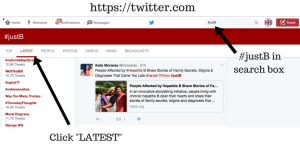
In a recent episode on the B Heppy podcast, Dr. Neehar Parikh, a hepatologist at the University of Michigan, discussed the link between hepatitis B and liver cancer, barriers to screening for liver cancer, and screening methods for liver cancer.
Hepatitis B and Liver Cancer
Most people are not unaware of the link between hepatitis B and liver cancer. Hepatitis B can cause liver cancer, especially when left untreated or unmonitored. The hepatitis B virus (HBV) can cause serious damage to liver tissue and result in the growth of tumors that may become dangerous over time. This is why doctors recommend patients living with hepatitis B to continue to monitor their liver health and take treatment if necessary to prevent the progression to liver cancer. The best way to check for cancer is by screening. It is recommended to get liver cancer screening (usually through an ultrasound that looks at damaged tissue or abnormal cell growth) once every six months.
Barriers to Liver Cancer Screening
There are several barriers to liver cancer screening at the provider and patient levels. For providers, many times liver cancer screening is not prioritized when compared to other types of cancer screening programs. This is partially due to the limited evidence on liver cancer screening benefits (even though data exists to show that liver cancer screening is valuable, it’s not as strong as the evidence used to back up other cancer screening initiatives like colonoscopy or breast cancer screening). This makes liver cancer a less valuable option for providers to recommend to their patients. Providers are also not always following recommendations or guidelines from liver societies on hepatitis B management and liver cancer surveillance. Liver cancer screening is also not included in the United States Preventative Services Taskforce (USPSTF), which is a tool used by most providers in the U.S. to recommend preventative services to their patients.
From the patient’s perspective, liver cancer screening is not always discussed by providers. For people living with chronic hepatitis B, many are not aware of the link between the virus and liver cancer. They are less likely to ask more questions about monitoring their liver health if the option or recommendation for screening is never brought up in a conversation with their providers. For many people who need liver cancer screening, they have limited access to care (loss to follow-up, lack of health insurance coverage, etc.). Limitations with the electronic health records (EHR) system is a challenge for patients who may find it difficult to schedule appointments (sometimes patients are not sent reminders to get ultrasounds).
For people living with hepatitis B, liver cancer is a serious health risk. It is crucial to make sure patients are aware of the link between hepatitis B and liver cancer, the role of screening in early diagnosis and prevention of advanced tumors, and the importance of monitoring liver health as recommended by liver societies and guidelines on liver cancer surveillance.
Listen to Dr. Parikh’s full episode on B Heppy here: https://bheppy.buzzsprout.com/1729790/14248470-barriers-to-liver-cancer-surveillance-with-dr-neehar-parikh.
Additionally, the Hepatitis B Foundation recently launched a Learn the Link campaign to help spread information on the link between hepatitis B and liver cancer. View all about the campaign and get access to free resources here.: https://www.hepb.org/research-and-programs/liver/hbv-liver-cancer-connection/


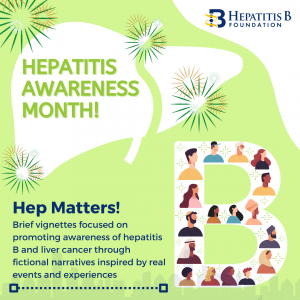

 Amina asked her doctor how she could get rid of this virus. Her doctor explained to her that there is no cure for hepatitis B, but antiviral treatment options do exist. While she may not be able to completely get rid of the virus, she can help protect herself from serious conditions such as hep B related cirrhosis or liver cancer with treatment. Amina’s doctor encouraged her to get treatment to prevent any serious problems from occurring. He also mentioned that treatment for hepatitis B is safe and effective. This did not make any sense to Amina. She thought to herself that if a treatment wouldn’t cure her of the disease, then there is no point in taking it. She felt healthy and did not show any symptoms. After the doctor suggested treatment options, she said that she will wait for the cure.
Amina asked her doctor how she could get rid of this virus. Her doctor explained to her that there is no cure for hepatitis B, but antiviral treatment options do exist. While she may not be able to completely get rid of the virus, she can help protect herself from serious conditions such as hep B related cirrhosis or liver cancer with treatment. Amina’s doctor encouraged her to get treatment to prevent any serious problems from occurring. He also mentioned that treatment for hepatitis B is safe and effective. This did not make any sense to Amina. She thought to herself that if a treatment wouldn’t cure her of the disease, then there is no point in taking it. She felt healthy and did not show any symptoms. After the doctor suggested treatment options, she said that she will wait for the cure.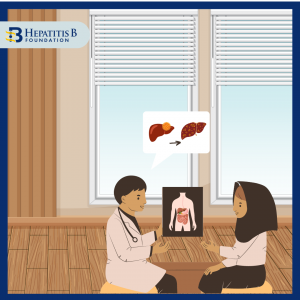 After moving to the U.S., Amina had gotten busy with school and work and did not follow up with her primary care doctor for years. Amina experienced stomach pains from time to time but they often went away on their own. On one occasion, her stomach pain worsened. She had to take a few days off from work to get better using home remedies, but they didn’t help. Finally, she went to the doctor’s office to learn more. She discovered that she had liver cancer. Her doctor referred her to a hepatologist (a liver specialist) for further treatment.
After moving to the U.S., Amina had gotten busy with school and work and did not follow up with her primary care doctor for years. Amina experienced stomach pains from time to time but they often went away on their own. On one occasion, her stomach pain worsened. She had to take a few days off from work to get better using home remedies, but they didn’t help. Finally, she went to the doctor’s office to learn more. She discovered that she had liver cancer. Her doctor referred her to a hepatologist (a liver specialist) for further treatment. 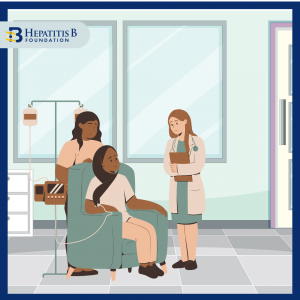 The hepatologist explained to Amina that hepatitis B can lead to liver cancer without monitoring and treatment. Even though a cure is not available, treatment options do exist, and they help in slowing and preventing serious liver disease, liver damage or liver cancer. If Amina had started antiviral treatment on time, she could have saved her liver. The doctor recommended chemotherapy for Amina to treat the cancer. Not only did her medical bills go up but Amina felt physically and mentally exhausted by the procedures. She advocates for everyone living with hepatitis B to get treatment if they need it and not wait for the cure. She also participates in advocacy efforts to make treatment options more affordable for people living with hepatitis B.
The hepatologist explained to Amina that hepatitis B can lead to liver cancer without monitoring and treatment. Even though a cure is not available, treatment options do exist, and they help in slowing and preventing serious liver disease, liver damage or liver cancer. If Amina had started antiviral treatment on time, she could have saved her liver. The doctor recommended chemotherapy for Amina to treat the cancer. Not only did her medical bills go up but Amina felt physically and mentally exhausted by the procedures. She advocates for everyone living with hepatitis B to get treatment if they need it and not wait for the cure. She also participates in advocacy efforts to make treatment options more affordable for people living with hepatitis B.
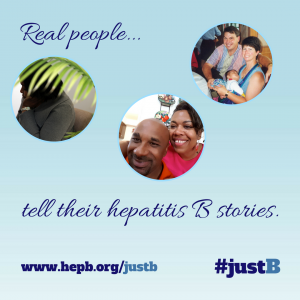 The
The 